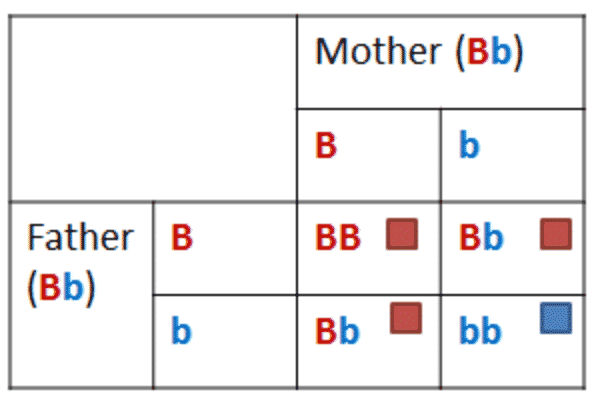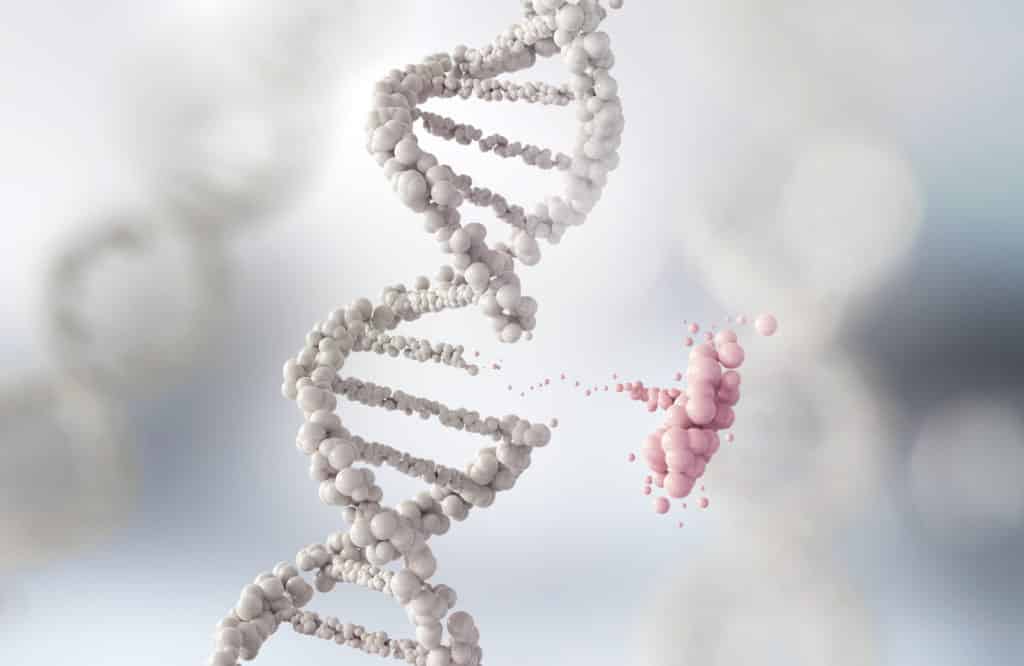Hemp Science
Genetics 101: Heredity & DNA of Hemp and Humans
It’s all about genetics! Whether it be why your eyes are blue or why a hemp variety produces high levels of CBD, it all comes down to genetics. With genetic sequencing technology, scientists have been able to predict how plants are going to look and behave before they’ve even been planted. This information is crucial to your decision on which hemp varieties to plant.
Genetics: The basics
Buckle your seatbelts and enjoy the ride back to 6th grade biology class! Before we can fully explore the importance of genetic sequencing, it’s useful to have a good foundation in the basics of genetics itself.
First things first, genetics is the study of heredity. Heredity is the expression of traits and how they are passed from parents to offspring. To understand heredity, we need to explore DNA, chromosomes, genes, and traits.
DNA - Deoxyribonucleic acid – is present in almost every cell of every living thing. Chains of repeating nucleotides form the double strands of DNA. DNA is responsible for replicating and storing all genetic information. Essentially, DNA is the molecular recipe for an organism and provides all the necessary instructions for that organism – plant, animal, or human – to grow and function.
DNA Details
Gene – A gene is a section of a DNA molecule. A gene isn’t just any section of DNA, though. It is a specific section that codes for a specific protein or group of proteins. These proteins are responsible for various traits. DNA can contain hundreds of thousands of genes.
Trait – A trait is any feature of an organism that can be passed from one generation to another. An example of a trait in humans is eye color. In hemp, an important trait is CBD concentration.
Chromosome – A chromosome is an entire chain of DNA wrapped along a protein structure. Basically, it’s a condensed form of DNA that is specifically produced to be shared with offspring. Humans have a total of 46 chromosomes that always occur in pairs. Twenty-three of those chromosomes come from the female and 23 come from the male. Hemp chromosomes function very similarly, but hemp has a total of only 20 chromosomes.
Allele – An allele is a specific variation of a gene. For example, eye color possesses a few different alleles like the brown allele, blue allele, green allele, and so on. They occur on a fixed spot in a chromosome. Organisms always have two alleles for each gene – one from each parent or chromosome. These alleles can be the same (homozygous) or different (heterozygous).
So, to sum things up, chromosomes contain genes, which are made up of portions of DNA. Variations in the nucleotides that make up the DNA sequence account for differences in traits. The traits that organisms express are dictated by which alleles present themselves in the organism’s parents.
Now we’re getting to the fun part… And by fun part, I mean the part that plays the biggest role in predicting how a plant might appear or behave. We are here to apply all this genetics knowledge to hemp, after all.
Some of the most important work on heredity and genomics was completed by Gregor Mendel using pea plants. By breeding multiple generations of plants, he observed that certain alleles are dominant while others are recessive. To make this really clear, let’s go back to the example of human eye color. A brown-eyed male and a brown-eyed female produce a child. In each of their genetic material, the brown eye allele is dominant, but they also both possess the allele for blue eyes as recessive. Because both parents carry the blue eye allele, there is a chance their child will have blue eyes, but it’s not very likely. The Punnett square below illustrates the possible phenotypic outcomes for eye color in this circumstance.

As illustrated above, by being able to assess an organism’s DNA, we’re able to predict what traits its offspring might code for and express, and the likelihood of each expression. This information has been observed by farmers and animal breeders for centuries, but with DNA sequencing methods, we are much more able to harness its predictive power.
DNA Sequencing: What is it?
DNA sequencing is the process of determining and mapping the placement and order of nucleotides in DNA. As we learned above, determining this can tell scientists multitudes of information, including where genes are located and how they are expressed.
So, what does all this have to do with hemp?
Unlike other plant species, scientists were not able to sequence the cannabis genome until recently due to regulations against marijuana. Though it is just in its infancy, research strongly suggests that it is genetic variations that differentiate hemp from its intoxicating counterpart, marijuana. These genetic variations explain how plants from the same species evolve to become two distinct plants and can be traced to two specific genes.
Typically, the marijuana chemotype has a high THCa and low CBDa ratio while the hemp chemotype has a low THCa and a high CBDa ratio. THCa and CBDa are formed when CBGa, the mother of all cannabinoids, interacts with either THCa synthase or CBDa synthase. THCa and CBDa then convert from their acidic forms to THC and CBD when exposed to heat and light. While mapping the genomes of both marijuana and hemp, researchers discovered that plants that express high levels of THC code for a hyperactive THCa synthase gene and those with higher levels of CBD code for a hyperactive CBDa synthase gene.
By identifying the genes responsible for cannabinoid production, scientists are making progress in determining how to produce certain cannabinoids in commercial quantities. This information allows us to breed cultivars that are more likely to remain compliant while expressing high levels of CBD. And that’s what hemp farmers must do in order to cultivate a usable product under current regulations.
With the help of genetic sequencing technology, scientist have even pinpointed a genetic marker for increased glandular trichome production on the plants leaves, not just the flower. Because the cannabinoid chemicals are synthesized within the frosty, hairlike trichomes on the flowers of mature hemp plants, breeding plants to express glandular trichomes on both the leaves and flowers would be extremely beneficial to the concentrate industry as well as the topical industry, as it would produce higher cannabinoid yields per plant.
What Is Genetic Testing?
Genetic testing is the cutting edge for breeders who want to develop unique and exceptional products for their customers, whether they be growers or consumers. First by understanding the genetics of the hemp plant, then by intentionally manipulating those genetics, farmers and breeders can create new strains that contain higher levels of the specific compounds that are most desirable for their use or product. No matter how skilled the farmer, or how ideal the growing conditions are, a plant with poor genes can never outperform one with superior genes. Genetic testing is a process that allows us to see a plant’s genetic makeup, or genotype. This reveals the plant’s hidden potential! Once identified, breeders can then begin to selectively breed plants in order to pass on the traits they want, and suppress, or eliminate, those that they don’t want. Genetic testing also certifies seeds for other vital characteristics like gender and lineage.
Understanding Genetics Benefits the Industry
At this point, anyone growing hemp knows about the Farm Bill regulations requiring that hemp must test at a maximum limit of 0.3% THC in order to remain compliant. If any crop tests higher than that, in most cases it must be destroyed, costing the farmer many thousands of dollars in wasted time and resources. One of the aims of genetic testing is to eliminate the possibility of a crop unexpectedly breaching that THC limit. If we can eradicate the guesswork of a plant’s potential, we get rid of the fear that a crop will fail in pre-harvest testing. It makes sense to know as much as we can about hemp genetics. Did you know that even plants without a functioning THCa gene still have the potential to produce THCa? It’s possibly a byproduct of other genes in the plant.
The more we know about genetics, the more we’ll unravel these current mysteries. We’ll be increasingly able to breed for plants that reliably test within USDA limits, as well as exciting developments like increasing hemp’s resistance to pathogens such as molds, mildews, and insects. Because there are no approved pesticides for use on hemp plants, having strong traits is the best and healthiest way to keep your crop healthy.
There are so many amazing things genetic testing can reveal! And the genetic knowledge and insight gained from the sophisticated genetic testing currently in development will lead to even more industry improvements across all sectors. For breeders and vendors, it can determine relatives and clonal relationships, and reduce variety and random factors from appearing in future generations. You will be able to identify and select certain physical structures to create sturdier crops, crops that produce a larger final harvest, or crops with an ideal growing cycle for your locale. Finally, genetic testing is a vital tool for protecting your strains from things like false patent claims.
Thanks for taking this brief tour through the basics of genetics, hemp genetics, and genetic testing. We hope you and your plants benefit from your increased knowledge. Happy fields!
Sources:
https://www.ncbi.nlm.nih.gov/pmc/articles/PMC3359589/
https://phys.org/news/2018-11-ancient-viruses-cannabis-high.html
https://genome.cshlp.org/content/29/1/146
https://www.pnas.org/content/116/18/8638
https://sciencing.com/nucleic-acids-structure-function-types-examples-13718409.html
https://ghr.nlm.nih.gov/primer/basics/dna




